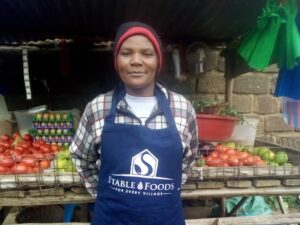As the world population continues to climb, so does the demand for food. With a finite amount of arable land, keeping up on the supply side is a major challenge for farmers located in certain regions of the world.
The Pnat think tank in Italy has come up with a futuristic way to help farmers in environmentally challenged locations grow food. The floating Jellyfish Barge uses biomimicry to simulate the natural processes needed to produce food in a self sufficient way. The structure, built with low-cost technologies and simple materials, consists of a wooden base of about 70 square meters, floating on 96 recycled plastic drums, and a glass greenhouse supported by a wooden structure.
The barge draws on solar desalination, greenhouse technologies, and floatation engineering to offer a fully self-contained food source.
Fresh water is provided by 7 solar stills arranged along the perimeter, designed by the environmental scientist Paolo Franceschetti. Through desalination, the barge can produce up to 150 liters of clean water per day from a variety of sources, including both salt water and brackish, which is a mixture of fresh and salt water. Solar desalination occurs when the sun’s energy evaporates water, which then falls as rain. The Jellyfish Barge replicates this system on a smaller scale, drawing in moist air and forcing it to condense within the floating drums that help the barge float.
The fans and pumps inside the greenhouse are powered by solar energy modules, mini wind turbines, and an innovative system that uses the motion of the waves to produce electricity.
Inside the barge’s greenhouse, a high-efficiency hydroponic cultivation method provides up to 70 percent of water savings compared to traditional hydroponic systems. The barge can be monitored via remote control using its innovative automated system.
One module can provide enough food to sustain two families. The octagonal shape of the platform allows combining different modules by connecting them with square floating bases, which may become markets and meeting places of a small water community.
“Lack of fresh water and arable land are the main barriers to food security in many areas of the world,” said Camillia Pandolfi, CEO of Pnat. “These countries rely on food imports. Jellyfish Barge in this context can be a disruptive innovation to produce local food without using water, energy or land.”
Coastal communities in particular are susceptible to food and water shortages and the effects of climate change. Seawater flooding prevents the cultivation of any land that is available for farming and often contaminates fresh water sources. According to Pnat, the Bay of Bengal routinely suffers from devastating seawater flooding.
Sub-Saharan Africa has also experienced several bouts of food and water scarcity. Hotter and drier conditions have led to a number of cyclical droughts, making a reliable source of food and water difficult to achieve for communities in the region.
Pandolfi first pitched the concept at the recent Hello Tomorrow conference in Paris seeking roughly $167,781 dollars in funding. Based on her projections, the barge could be commercially available within three years.
“Our main competitors are the traditional hydroponic greenhouses,” Pandolfi said. “But for them there is not enough available land next to the cities. They also rely on water and energy and they are subject to fluctuations in prices.”
Jellyfish Barge, according to Pandolfi, provides consumers with an entirely different experience than traditional hydroponic greenhouses. “Jellyfish barge has another important advantage in that it can be experienced directly by the final consumer, who can go and buy their own vegetables directly on site.”
Have news or tips? Email [email protected].
















Sponsored
International Fresh Produce Association launches year 3 of its produce accelerator